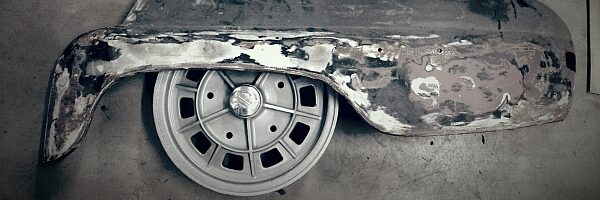So, the 1964 got registered and I’ve been taking it for a some rides the past few days. There’s been a few hicups which were pretty much expected – it is after all an almost 50 year old car and last saw the open roads in 1976!
But I did have one really annoying problem with the clutch and it seemed that pinpointing the problem was somewhat difficult.
The problem was, that after some driving the clutch just stopped releasing and stayed engaged. We checked the cable and that it moved as it should. Everything looked just fine. After we tightened the adjustment a few rounds the clutch started to work perfectly again. As the subsequent test drive went fine, no clutch problems, I was ready to think it was just some components finding their place.
But the next time I took the car out the problem returned – I actually had to adjust the cable on the road to get back home. So we again checked the cable – everything looked ok.
At this point I had a few suspicions – mainly concerning the pressure bearing fork. I was considering that maybe the welds had cracked or that fork itself had a crack around the pressure bearing attachment and was slowly giving in. Or that maybe the locking pins that attach the fork to the vertical shaft had broken. But all these felt like problems that would pretty much give in almost instantaneously – not slowly over time.
Anyway, we opened the little inspection hatch on top of the differential casing and took a look inside. Everything looked just fine. No cracks anywhere to be seen, everything in correct places, and when we tested the clutch operation everything worked perfectly – no problems what so ever. Running out of ideas we decided to close the inspection hatch and come back another day. Here’s when we got the lucky break – Dad managed to fumble with an attachment screw and dropped it all the way to the bottom of the engine bay, under the gearbox. We fished the screw out with a magnet, and something came up with it – a little piece of locking pin!
“Case solved my dear Watson!”
When we were previously making the car ready for registration inspection we put in a gearbox that felt like it was fine, but we had no opportunity to test it properly. On this gearbox the locking pins had been replaced with new ones. But as it turned out, the box made a little noise on second gear and we decided to replace it (and fix it later). We took the engine and gearbox out and put in a box that we had restored with all new bearings and figured it should be good to go. But we didn’t replace the locking pins! As it turned out the box worked just fine and is quiet. But it’s pretty apparent the 50 year old locking pins weren’t up to the task anymore.
I would have thought that this kind of fault would have pretty much made the clutch inoperable instantaneously but it looks like the pieces of the locking pins acted like little wedges only giving away incrementally over time.
The moral of the story: Inspect and replace the locking pins while you have the gearbox out – saves a ton of trouble.
